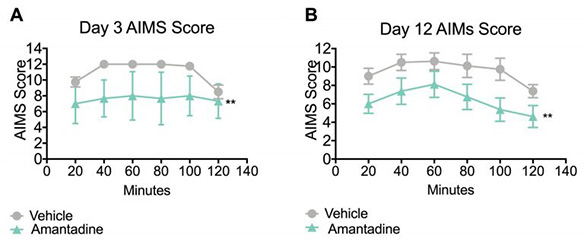L-DOPA-Induced Dyskinesia
Discover how Melior’s unique phenotypic screening platforms can uncover the untapped value of your candidate therapeutic
The most effective current treatment for Parkinson’s Disease (PD) is dopamine replacement with the dopamine precursor L-DOPA. However, long-term L-DOPA therapy is commonly associated with motor complications that include response fluctuations and involuntary movements called L-DOPA-induced dyskinesia (LID).
This condition can effectively be modeled in rats that have been rendered hemi-parkinsonian by way of a 6-hydroxydopamine (6-OHDA) lesion of the striatum followed by chronic treatment of L-DOPA. Rats subjected to this sequence treatment exhibit abnormal involuntary movements (AIMs) similar to the called L-DOPA-induced dyskinesia (LID) symptoms seen in PD patients.
In the study described below, rats were evaluated for dyskinesia including axial, limb and orolingual AIMs. The recently approved LID therapeutic. Amantadine showed therapeutic benefit by reducing AIMs.

Once daily administration of amantadine (40 mg/kg) significantly reduces AIMs score on day 3 of dosing (A). This effect was sustained until at least day 12 (B) at which point the study was terminated. Data are mean ± SEM; **p<0.01 compared to vehicle. Scores represent the sum of axial, limb and orolingual AIMs at multiple time points over a two hour observation period.
The L-DOPA-Induced Dyskinesia model (LID Model) in normally only conducted in rats. Study durations are typically about one month. Groups sizes of 8-12 animals is ideal.



 Interested in running an L-DOPA-Induced Dyskinesia model study?
Interested in running an L-DOPA-Induced Dyskinesia model study?